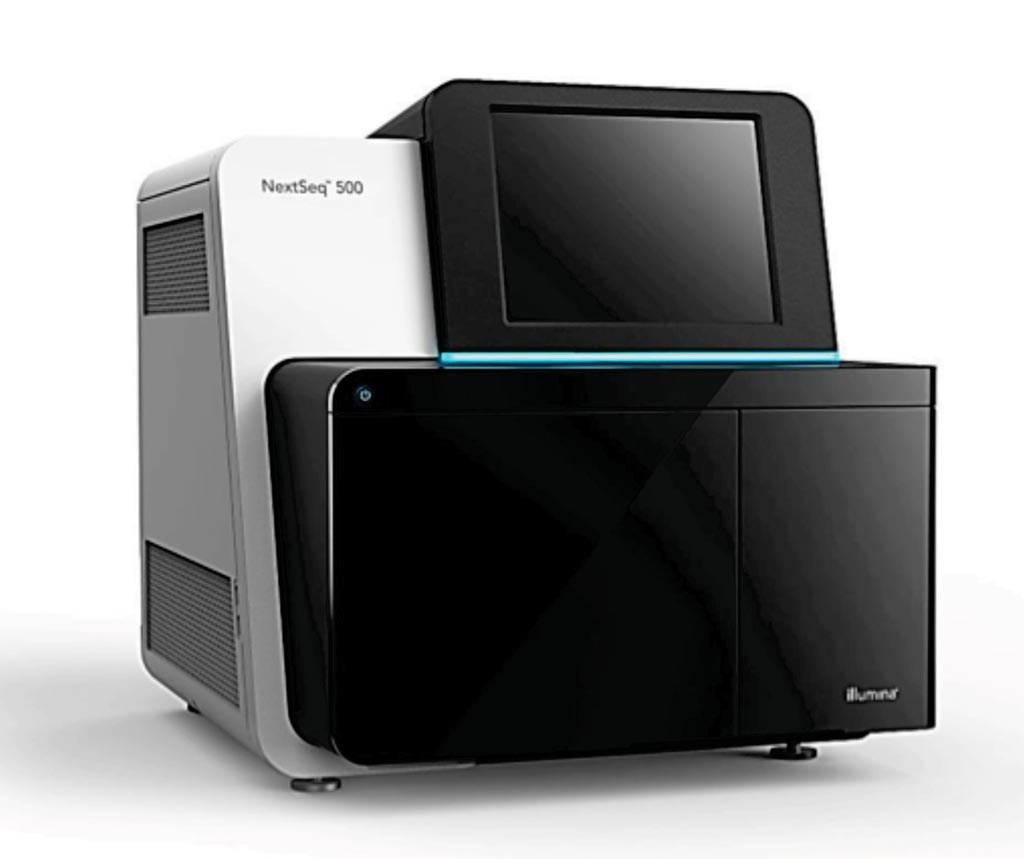Distinct Epigenetic Features Found in Alzheimer's Brains
By LabMedica International staff writers
Posted on 21 Mar 2018
Aging is the strongest risk factor for Alzheimer’s disease (AD), although the underlying mechanisms remain unclear though AD tends to coincide with certain chromatin shifts in the aging brain.Posted on 21 Mar 2018
The chromatin state in particular through the chromatin histone acetylation mark H4K16ac, has been implicated in aging and thus may play a pivotal role in age-associated neurodegeneration. H4K16 is part what should now be a familiar group of lysines on the N-terminal tail of histone H4.

Image: The NextSeq 500 benchtop sequencer delivers on-demand exome, transcriptome and whole-genome sequencing (Photo courtesy of Illumina).
Scientists at the University of Pennsylvania (Philadelphia, PA, USA) used chromatin immunoprecipitation sequencing (ChIP-seq) targeting H4K16ac in post-mortem samples from the lateral temporal lobes of the brains of 12 individuals with AD who had a mean age of 68 years old. They did similar ChIP-seq-based profiling on samples from 10 older individuals with a mean age of 68 years old and nine somewhat younger individuals with a mean age of 52 years old.
The team used the NextSeq 500 instrument and detected that in the AD-affected brain samples, roughly 323,000 H4K16ac peaks by ChIP-seq, which was slightly fewer than the 349,000 or so peaks in the brain samples from older, unaffected individuals. Consistent with the histone mark's ties to aging, the young brain samples had just 239,000 H4K16ac peaks. The H4K16ac mark distribution and overlap between the three groups, the scientists saw more pronounced overlap between the brain samples from older, healthy individuals and the AD sufferers. Around 183,000 H4K16ac peaks overlapped between those groups compared to a 153,000-peak overlap between samples from old and young controls and a 146,000-peak overlap in young controls and AD cases. Even so, the peaks were largely distinct in the younger, older, and AD groups.
The authors concluded that their analysis highlights the presence of three classes of AD-related changes with distinctive functional roles. Furthermore, they discovered an association between the genomic locations of significant H4K16ac changes with genetic variants identified in prior AD genome-wide association studies and with expression quantitative trait loci. Their results establish the basis for an epigenetic link between aging and AD. The study was published on March 5, 2018, in the journal Nature Neuroscience.
Related Links:
University of Pennsylvania














